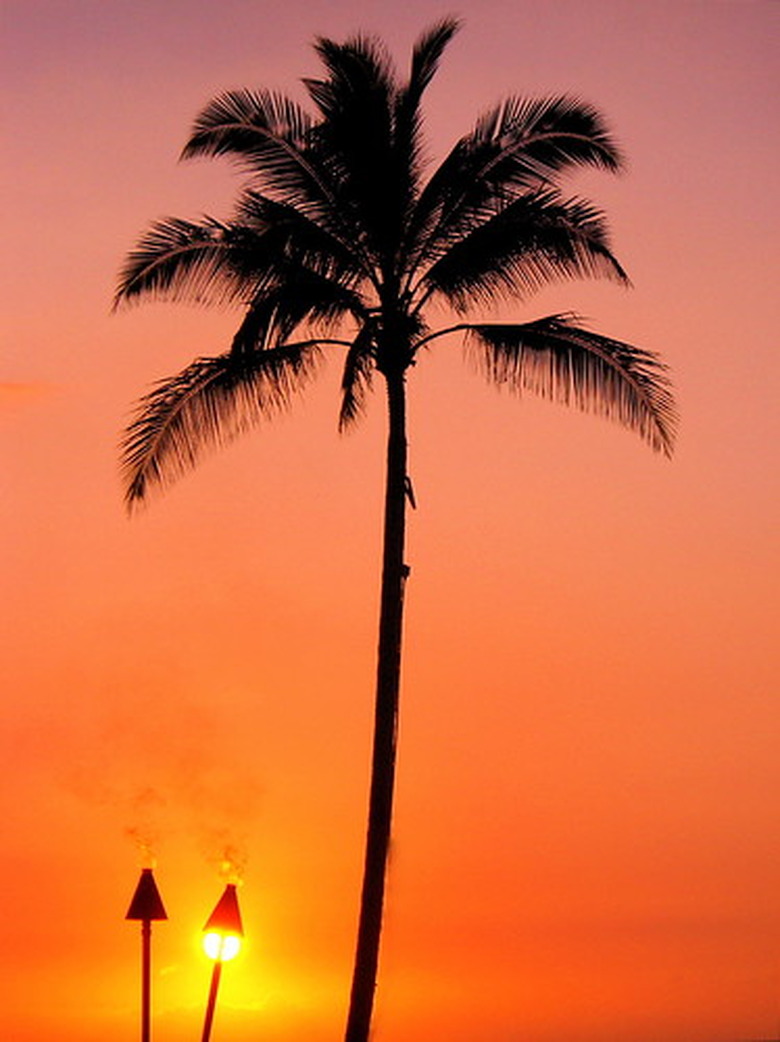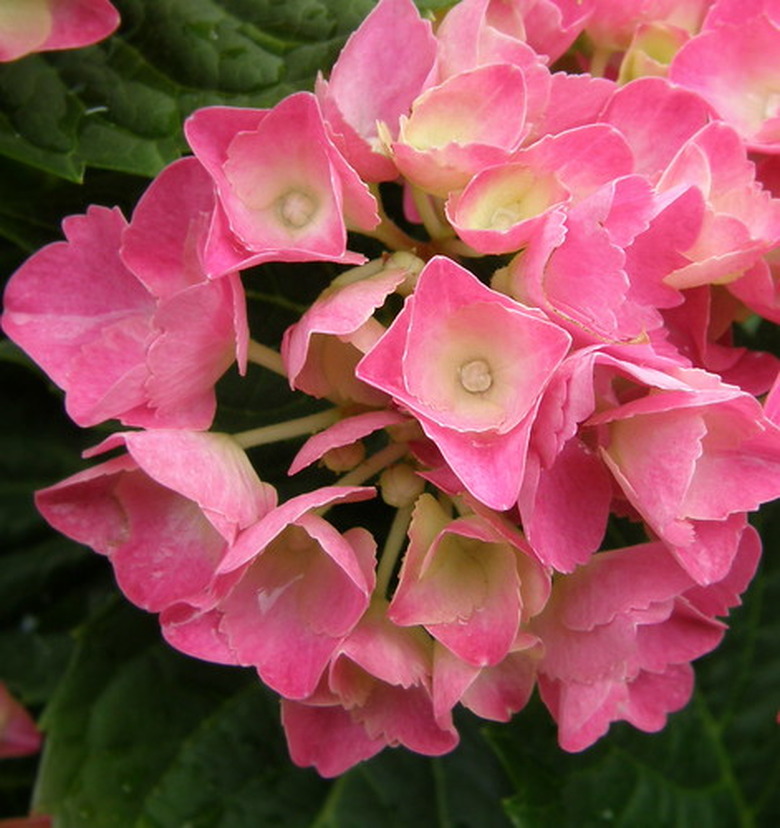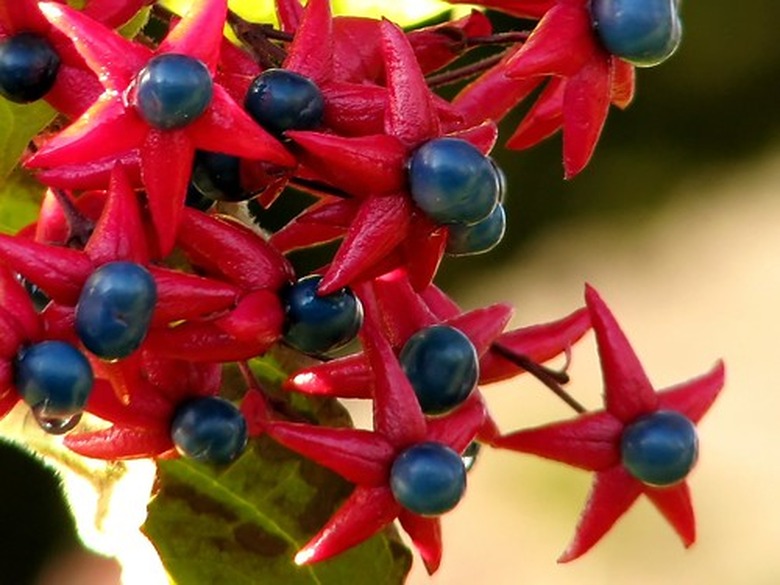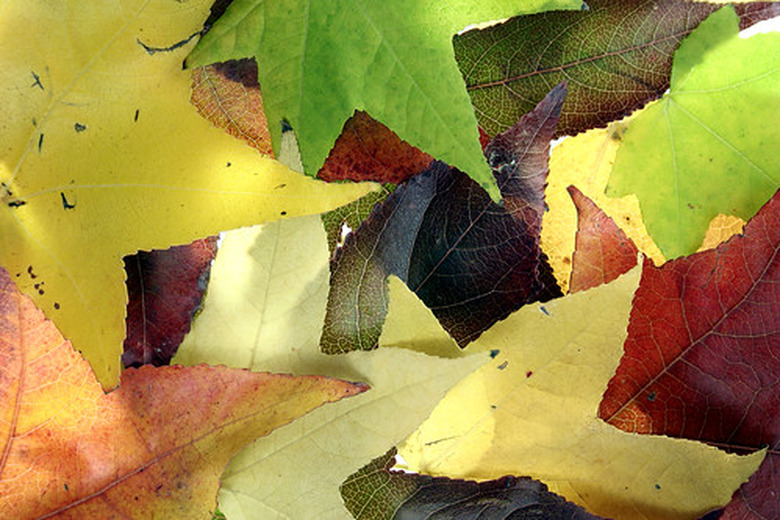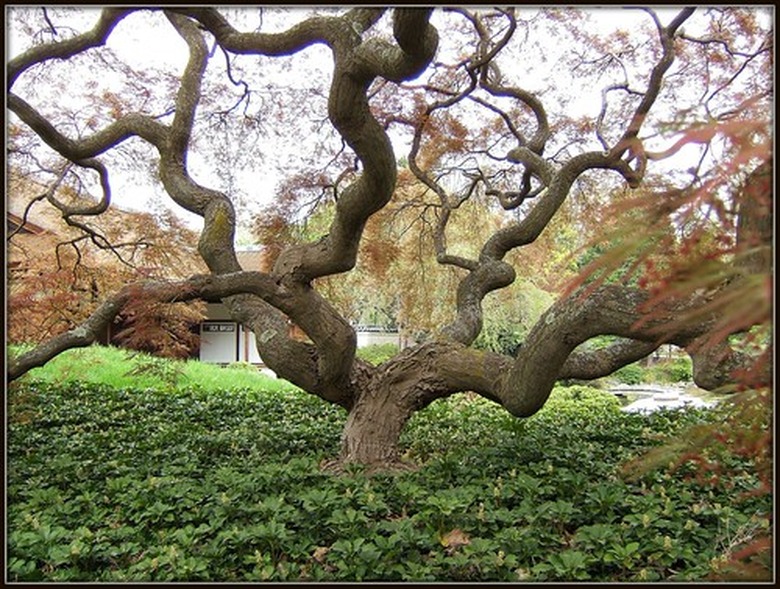Definition Of Ornamental Plants
Plants grow on all of the world's continents. Although some are small and mundane in appearance, others provide us food or building materials, while others seem to only provide visual delight. Broadly speaking, an ornamental plant is one that has at least one visually attractive feature. Beauty is subjective. Fruit and timber trees and food crops can be visually stunning and ornamental, but are usually labeled for their specific purpose.
Plant Form/Habit
The growth habit of plants can be considered ornamental. Narrow-growing trees, which have a columnar or fastigiate habit, can create a pleasing silhouette. Likewise, a gigantic, sprawling plant like an oak can be visually interesting because of its rounded canopy. Some plants resemble triangles in shape, while others are small, button-like tufts.
- Plants grow on all of the world's continents.
- Fruit and timber trees and food crops can be visually stunning and ornamental, but are usually labeled for their specific purpose.
Specific growing shapes of plants can be manipulated for design elements in a garden landscape. Prostrate and weeping branches juxtaposed with sharp, upright trunks or leaves can heighten the visual beauty of a garden composition.
Flowers
Perhaps the most celebrated aspect of a plant is its flower. Although a plant may look mundane or even ugly, a visually colorful or uniquely shaped flower with a delicious scent can define that plant as ornamental. Flowers need not be beautiful, they can also be ugly or strange, as someone can find visual interest and thus label the plant as having ornamental qualities.
Some plants are grown merely for their flowers, such as roses and tulips. Whereas other plants, like some cherries and apples, are grown for their edible fruits but also display an attractive springtime blossom. Flowers are admired for being singular and large as well as being tiny but numerous.
- Specific growing shapes of plants can be manipulated for design elements in a garden landscape.
- Whereas other plants, like some cherries and apples, are grown for their edible fruits but also display an attractive springtime blossom.
Fruits and Seeds
Just as a plant can be rather ordinary until it shows off its flowers, other plants may not become ornamental until their fruits or seeds are formed. Brightly colored fruits and seeds, or those that have a unique shape can find favor with humans. The tropical sausage tree or baobab tree has fruits that look like rats hung by their tails. The seeds of sweetgum are round and prickly while those of a maple are winged and "helicopter-like." The colorful fruits of holly are particularly appreciated in winter.
Edible food crops can also have ornamental features. The Fuji apple is multicolored, but usually more admired for its delicious taste. Wheat grain seed heads are architecturally beautiful and can be used in dried flower arrangements.
- Just as a plant can be rather ordinary until it shows off its flowers, other plants may not become ornamental until their fruits or seeds are formed.
- Wheat grain seed heads are architecturally beautiful and can be used in dried flower arrangements.
Foliage Shape and Color
Plant leaves have a long duration in the growing season. The shape and color of a leaf can render a plant ornamental, as can the leaf's glossiness or felt-like texture. Maple leaves are quickly recognized by their shape, the glossy southern magnolia leaf has a fuzzy coppery underside and some waterlily leaves have mottlings of green, burgundy and purple.
Color of foliage can change across the year, including having a yellow or pink color when first emerging in spring, to having variegated green and white foliage in summer, and vibrant yellow, red or orange colors in autumn, brought on by shortened days and chilly nights.
Bark and Structure
There is tremendous variety in bark among trees and shrubs, from thick and corky to glass-like and even spotted like the skins of leopards and snakes. Once flowers, seeds and foliage disappear in winter, the bark and overall structure of plants can make them particularly ornamental. Contorted branches, or a matrix of twigs with thorns that catch snowfall, or red and brown striped bark are aesthetically pleasing. Shrubs may reveal bark that is exfoliating, or shedding in peeling strips, or that is vibrantly colored.
- Plant leaves have a long duration in the growing season.
- Maple leaves are quickly recognized by their shape, the glossy southern magnolia leaf has a fuzzy coppery underside and some waterlily leaves have mottlings of green, burgundy and purple.

